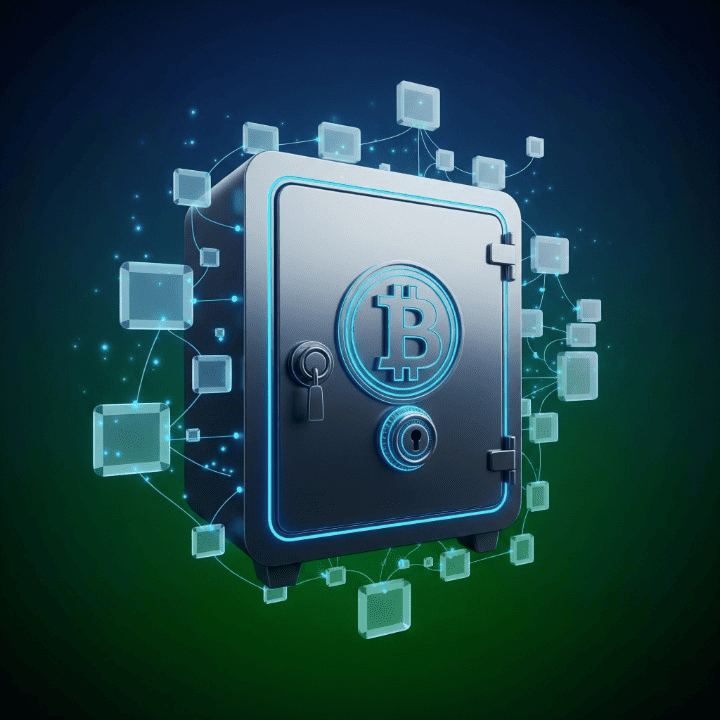
Introduction
The world of cryptocurrency is a new financial frontier, offering immense opportunities for growth and innovation. Yet, with this freedom comes a great responsibility for personal security. Unlike traditional banks, there is no central authority to call if your funds are stolen or you forget a password. You are your own bank, and the security of your digital assets is entirely in your hands. This reality, while empowering, can also be a source of anxiety for new and experienced investors alike. A single mistake—a phishing scam, a weak password, or a compromised wallet—can lead to the permanent loss of your funds. This comprehensive guide will walk you through the most essential security practices for investing in crypto. We’ll cover everything from securing your wallets to recognizing common scams, giving you a clear, actionable plan to protect your investments and gain peace of mind in this decentralized world.
The Foundation of Crypto Security: Understanding Your Keys
The core of crypto security lies in two unique cryptographic keys: a public key and a private key.
- Public Key: This is your wallet address. It’s like your bank account number. You can share this with anyone, as it allows people to send you cryptocurrency.
- Private Key: This is your secret password. It’s like the PIN to your bank account. It gives you complete control over your funds and allows you to sign transactions. You must never share your private key with anyone, ever. If someone gains access to your private key, they can steal your funds, and there is no way to recover them.
A related concept is your seed phrase (or recovery phrase), which is a series of 12 or 24 words. This phrase is a human-readable version of your private key. It’s the master key to your entire wallet. If you lose your phone or your computer, you can use your seed phrase to restore your wallet on a new device. You must protect your seed phrase with your life.
Step 1: Choosing and Securing Your Wallets
The first and most critical step in your crypto security journey is to choose the right wallet and secure it properly. Wallets are categorized as either “hot” or “cold.”
Hot Wallets: For Convenience and Small Amounts
Hot wallets are connected to the internet. They are convenient for frequent trading and small transactions, but they are more vulnerable to online threats like hacking and malware.
- Exchange Wallets: These are wallets on platforms like Coinbase or Binance. They are very easy to use, but you do not control your private keys. You are trusting the exchange with your funds, which carries a risk.
- Mobile Wallets and Desktop Wallets: These are apps you download on your phone or computer. They give you control over your private keys, but they are still vulnerable to the security of your device.
Security Tips for Hot Wallets:
- Use a strong, unique password and enable two-factor authentication (2FA) on all exchange accounts.
- Never click on suspicious links or download attachments from unknown senders.
- Use a dedicated device for crypto transactions if possible.
- Only keep a small amount of cryptocurrency in your hot wallet—just enough for what you need to trade.
Cold Wallets: For Maximum Security
Cold wallets are physical devices that are not connected to the internet. They are the gold standard for long-term storage of a significant amount of cryptocurrency.
- Hardware Wallets: Devices like Ledger or Trezor are the most popular type of cold wallet. They store your private keys offline, making them immune to online attacks. You must physically connect the device and confirm transactions with a button press.
Security Tips for Cold Wallets:
- Buy your hardware wallet directly from the manufacturer. Never buy one from a third party or a reseller, as it could be tampered with.
- When setting up your wallet, write down your seed phrase on paper and store it in a secure, fireproof, and waterproof location, like a safe. Never take a picture of it or store it on any digital device.
- Do a “dry run” by sending a small amount of crypto to your new cold wallet and then attempting to restore it with your seed phrase on a different device to ensure your backup is correct.
Step 2: Recognizing and Avoiding Common Scams
Scams are a constant threat in the crypto space. They evolve quickly, but many follow a similar pattern. Recognizing them is a crucial part of your financial planning.
- Phishing Scams: These are emails, texts, or fake websites designed to trick you into revealing your private keys or seed phrase. Always double-check the URL of a website and never enter your seed phrase online unless you are restoring a wallet on a trusted app. Remember: no legitimate service will ever ask for your private key or seed phrase.
- “Rug Pulls”: This is a type of scam where a project’s developers build a new token, attract investors, and then abandon the project and steal the funds. Research projects thoroughly before investing and be wary of new projects with anonymous teams or promises of impossibly high returns.
- Impersonation Scams: Scammers will impersonate a trusted individual or company on social media or messaging apps, offering a fake opportunity or asking for help. Always verify the identity of the person you are communicating with.
Step 3: Best Practices for Secure Crypto Investing
Beyond your wallets and scams, a few general rules of thumb can significantly increase your security.
- Don’t Share Your Information: Never share your private keys, seed phrase, or passwords with anyone.
- Practice Diversification: This applies not only to your investments but also to your security. Don’t put all your money in a single wallet or on a single exchange.
- Use a Password Manager: Use a secure password manager to create and store unique, strong passwords for all your crypto accounts.
- Stay Informed: The crypto space changes quickly. Follow reputable news sources and security experts to stay up to date on new threats and best practices.
Conclusion
Navigating the world of investing in crypto requires a proactive and vigilant approach to security. Your digital assets are your responsibility, and a strong security posture is just as important as a sound financial planning strategy. By understanding the critical difference between your public and private keys, using a combination of hot and cold wallets for different purposes, and learning to recognize and avoid common scams, you can significantly reduce your risk. Remember, the journey into the crypto world is a marathon, not a sprint. Take the time to build a strong security foundation today. It’s the single most valuable investment you can make in your financial future.


